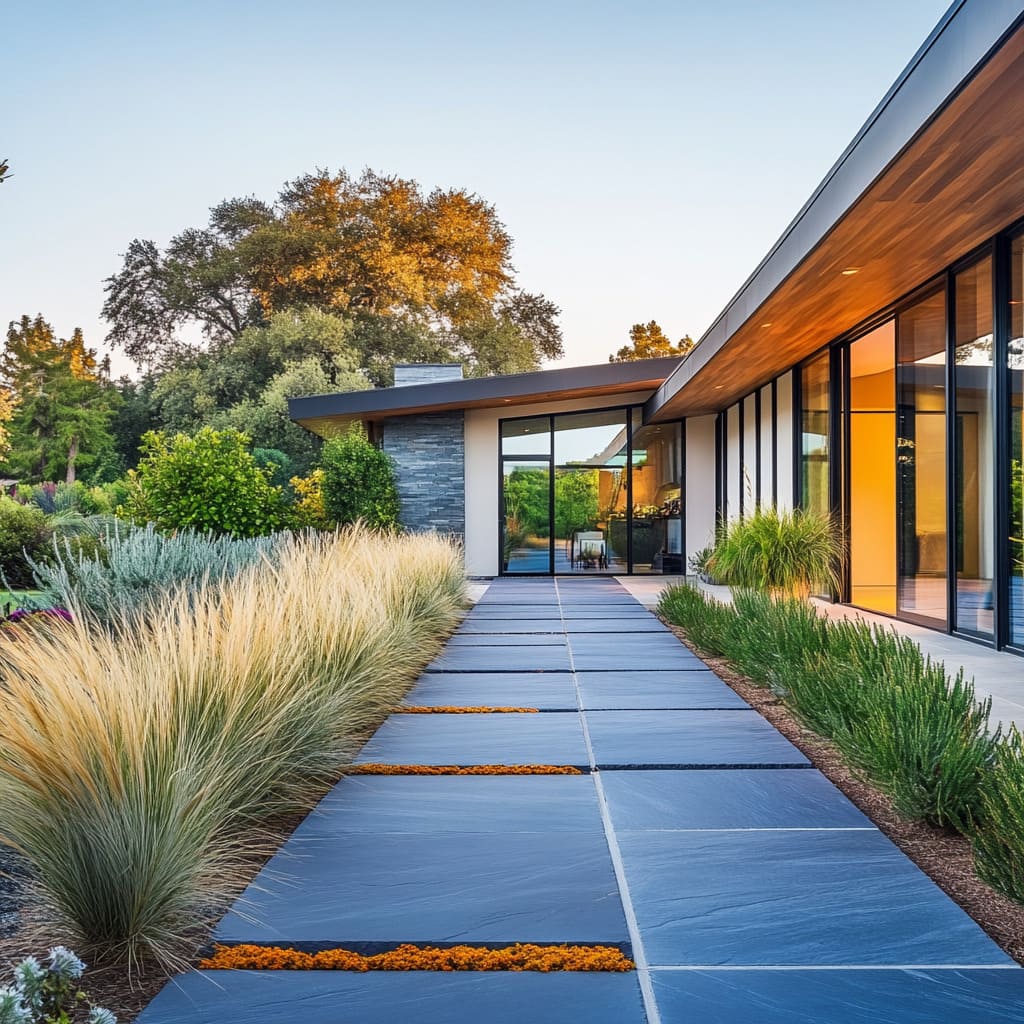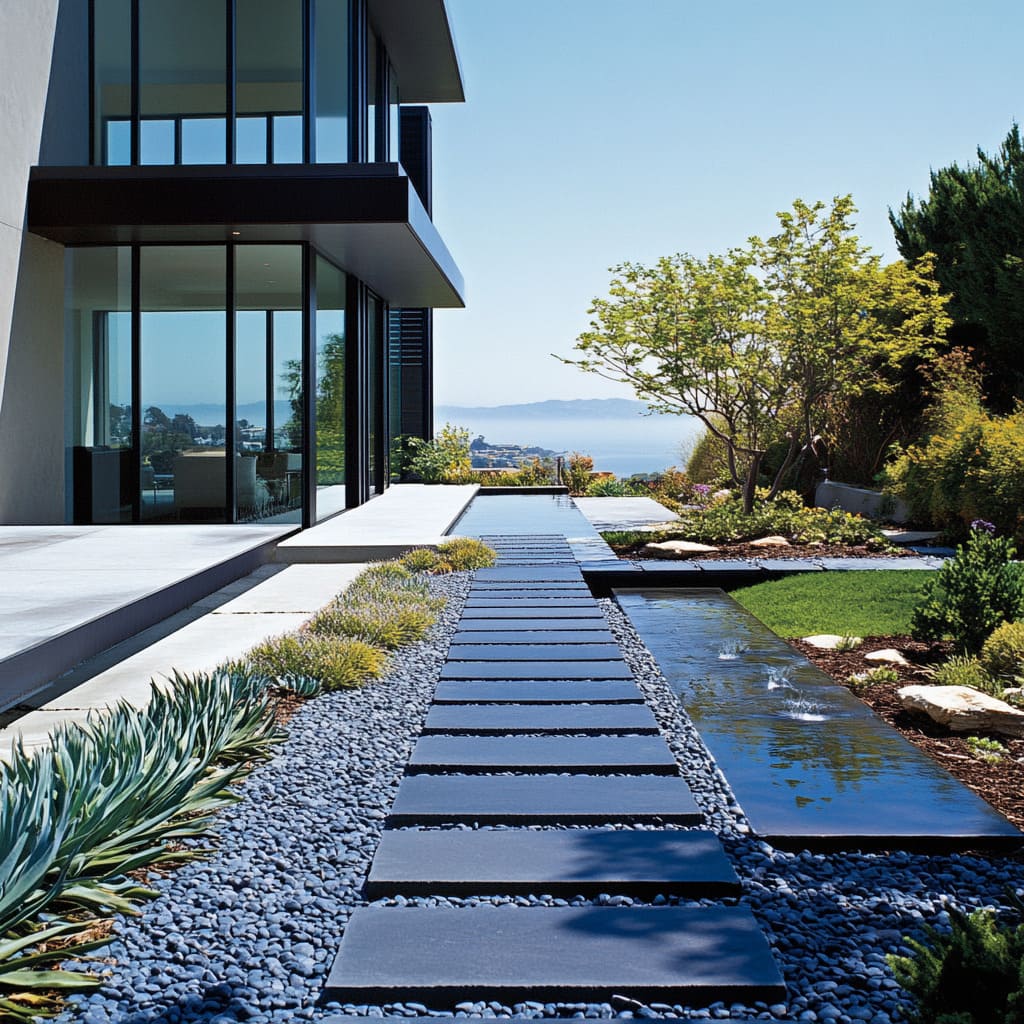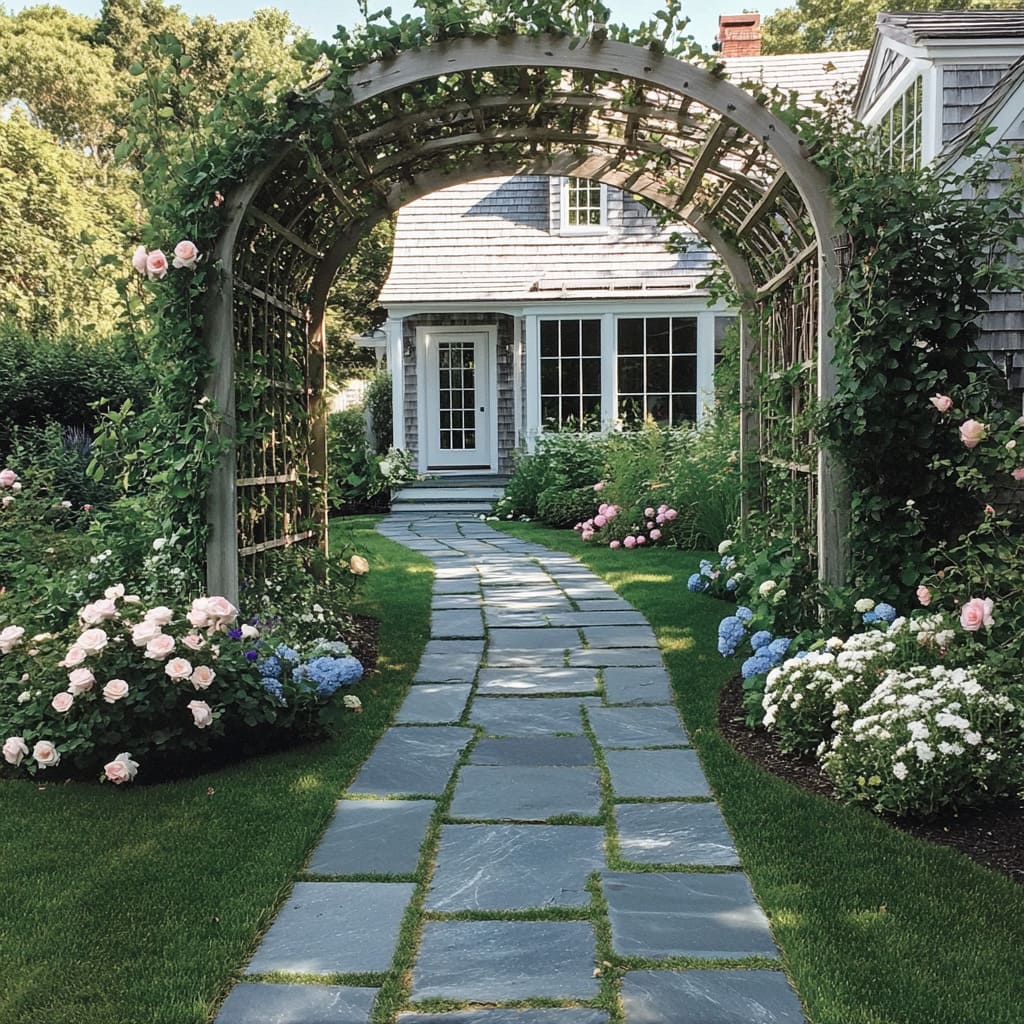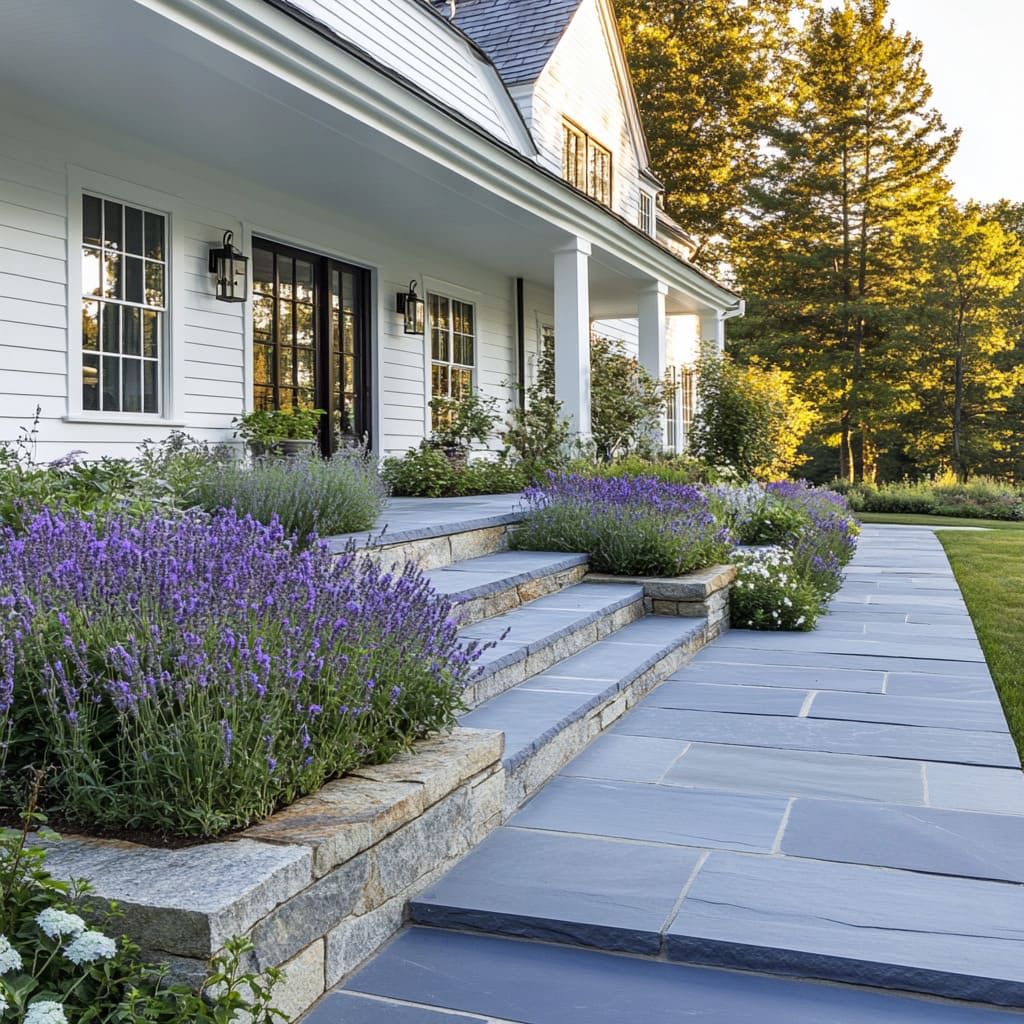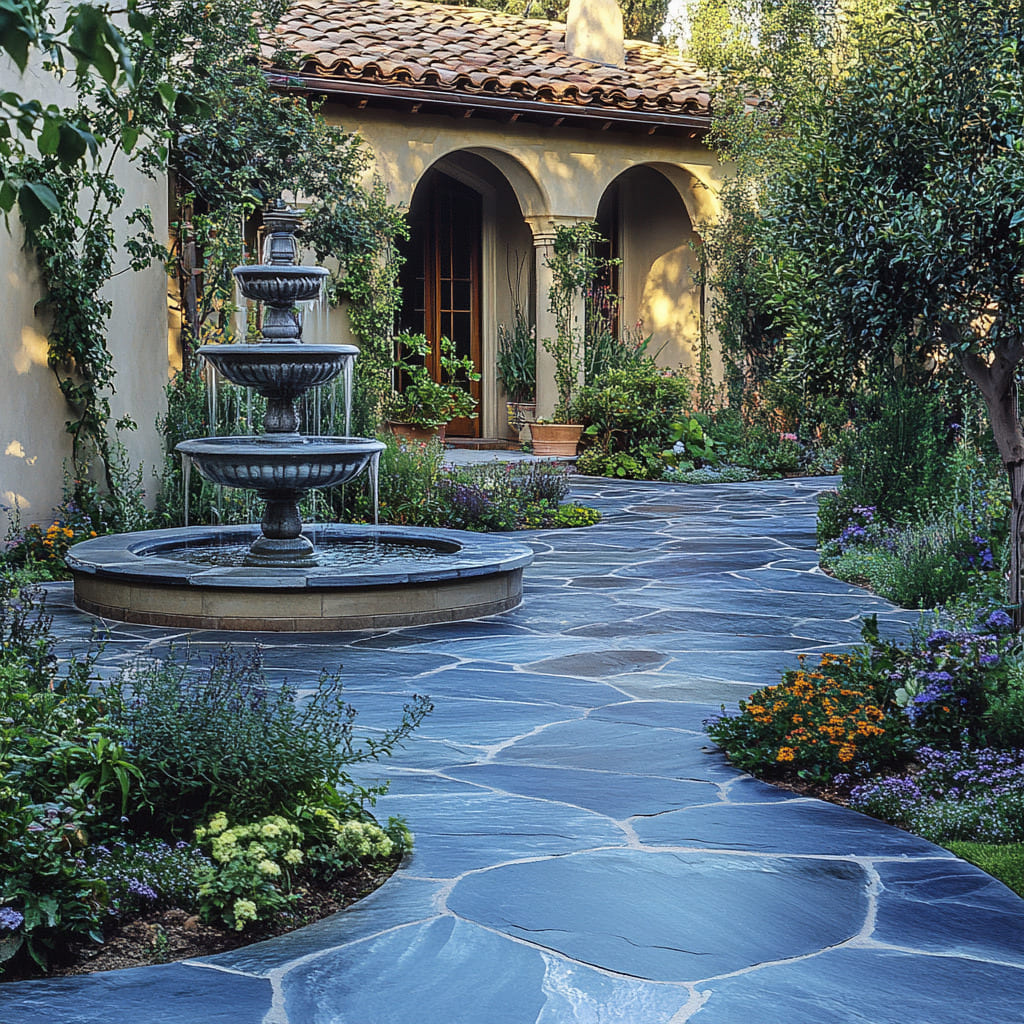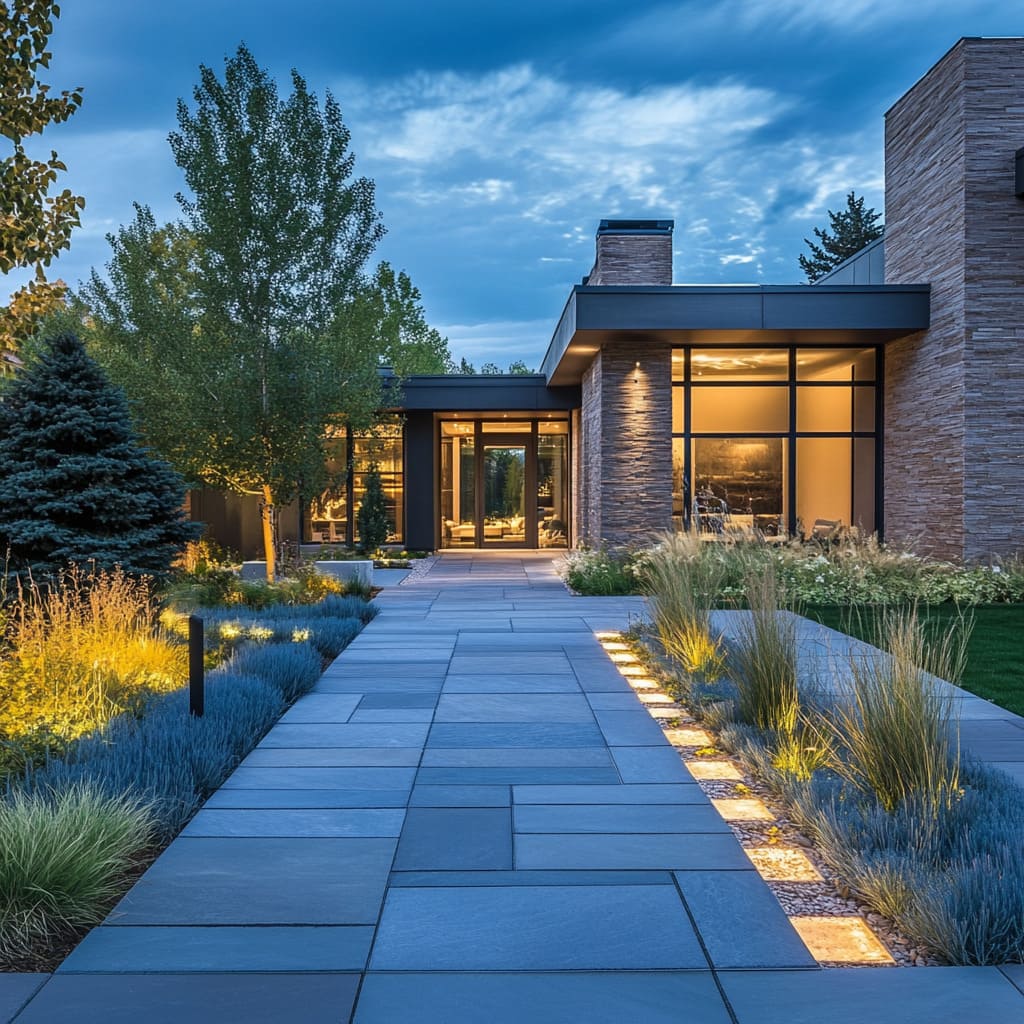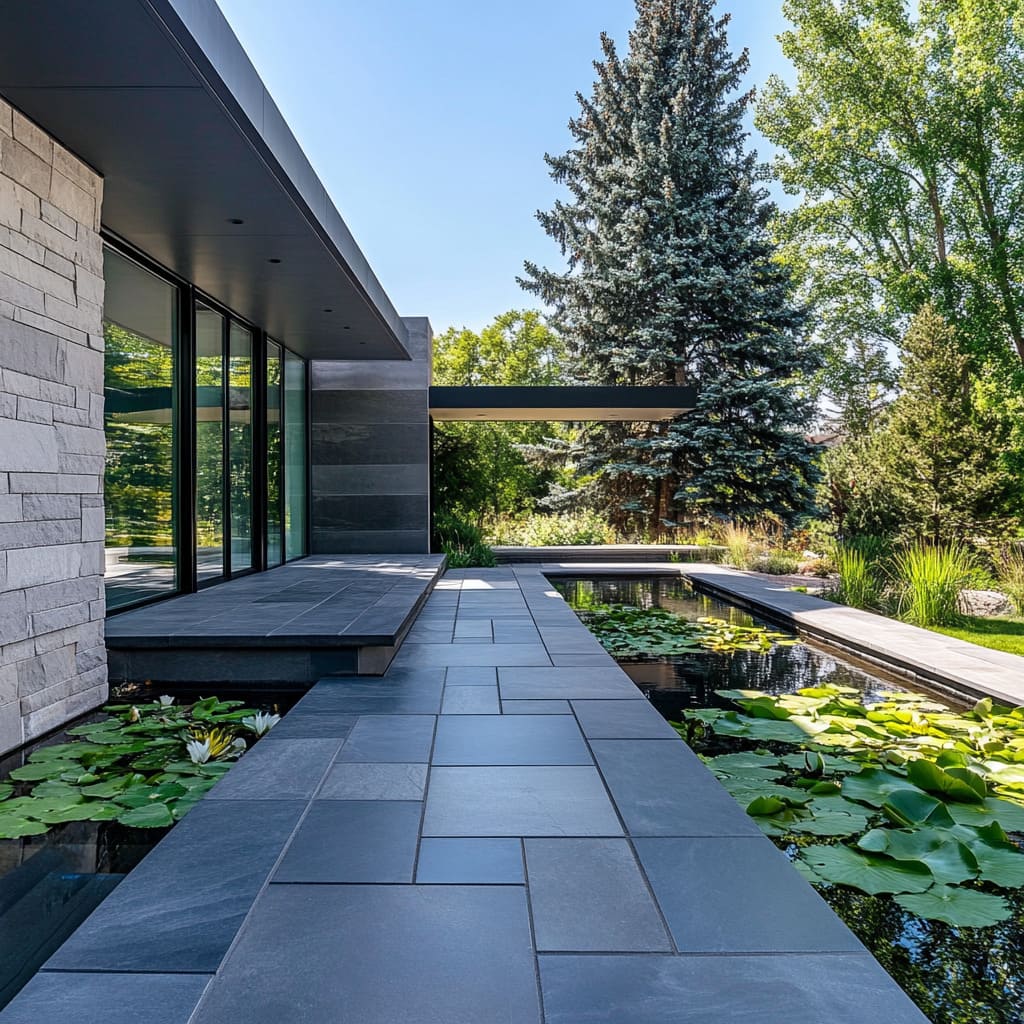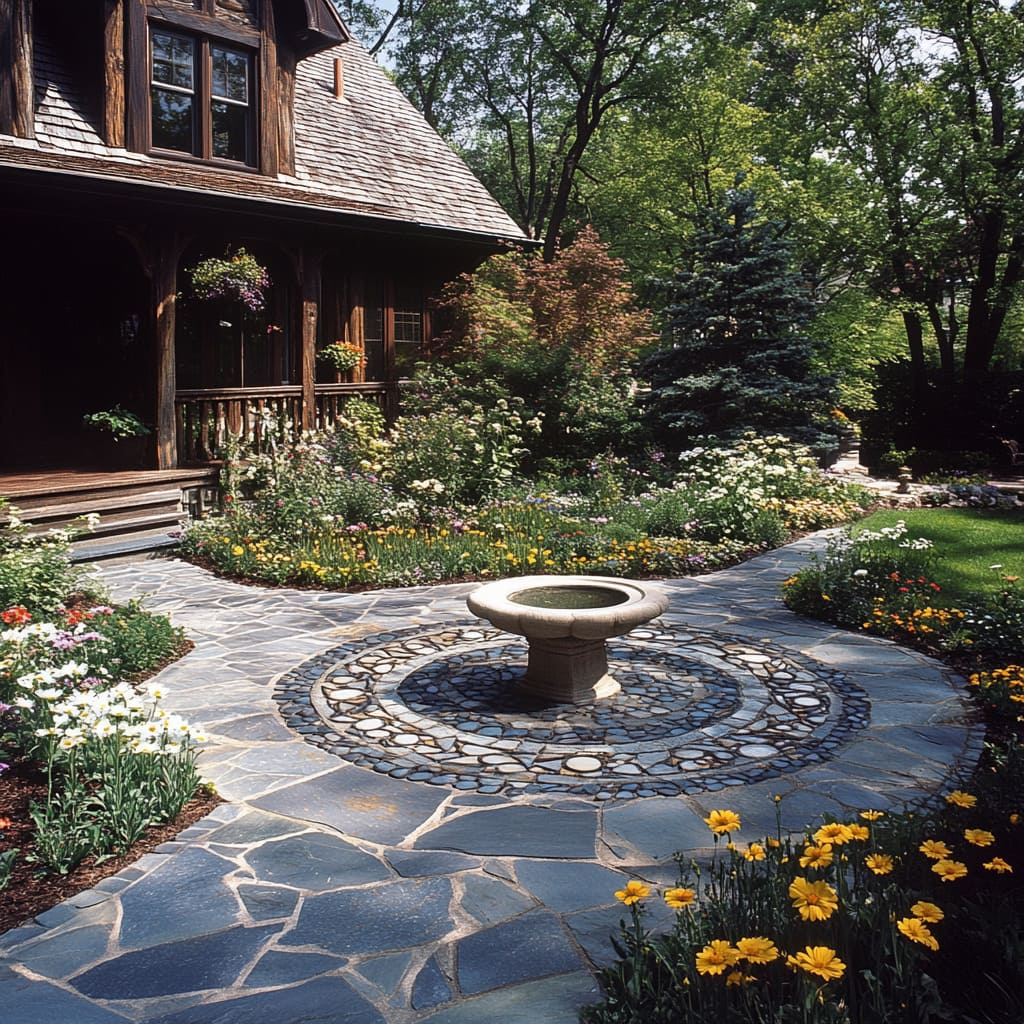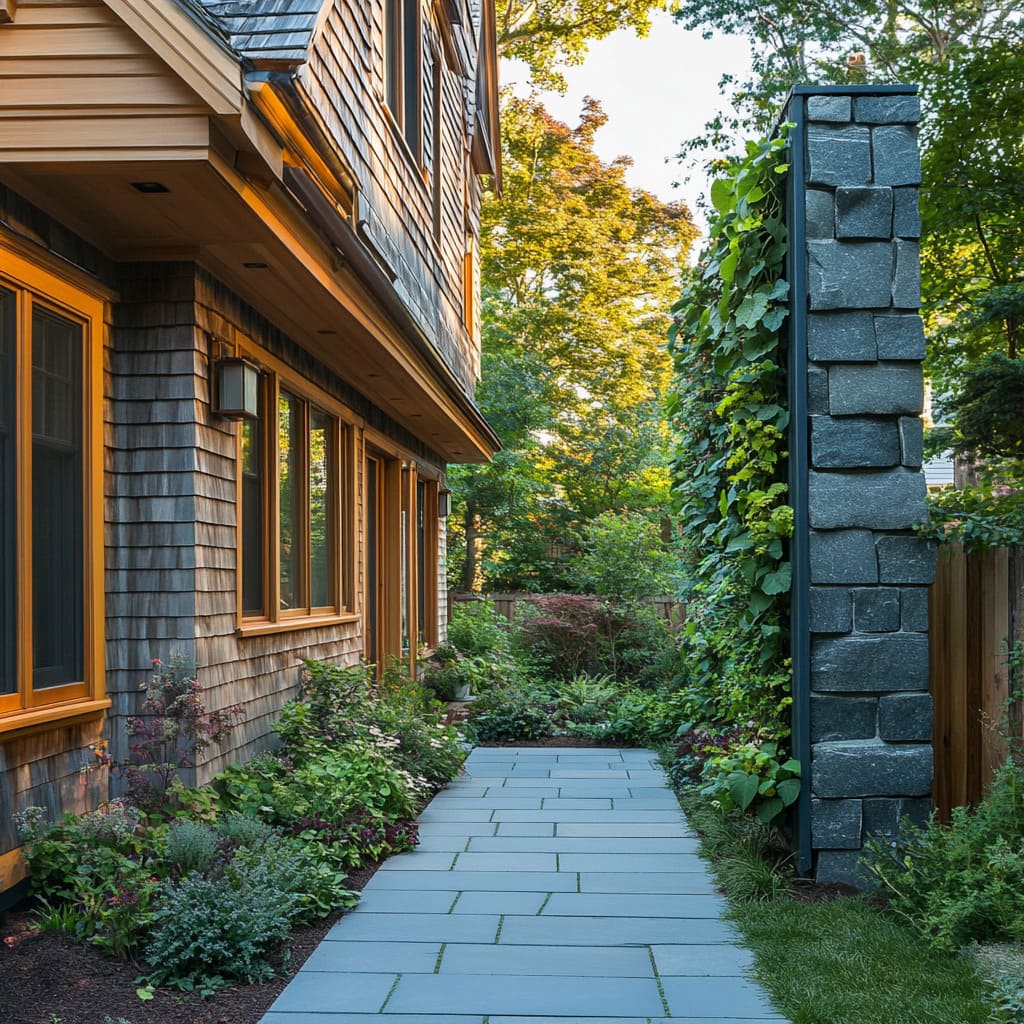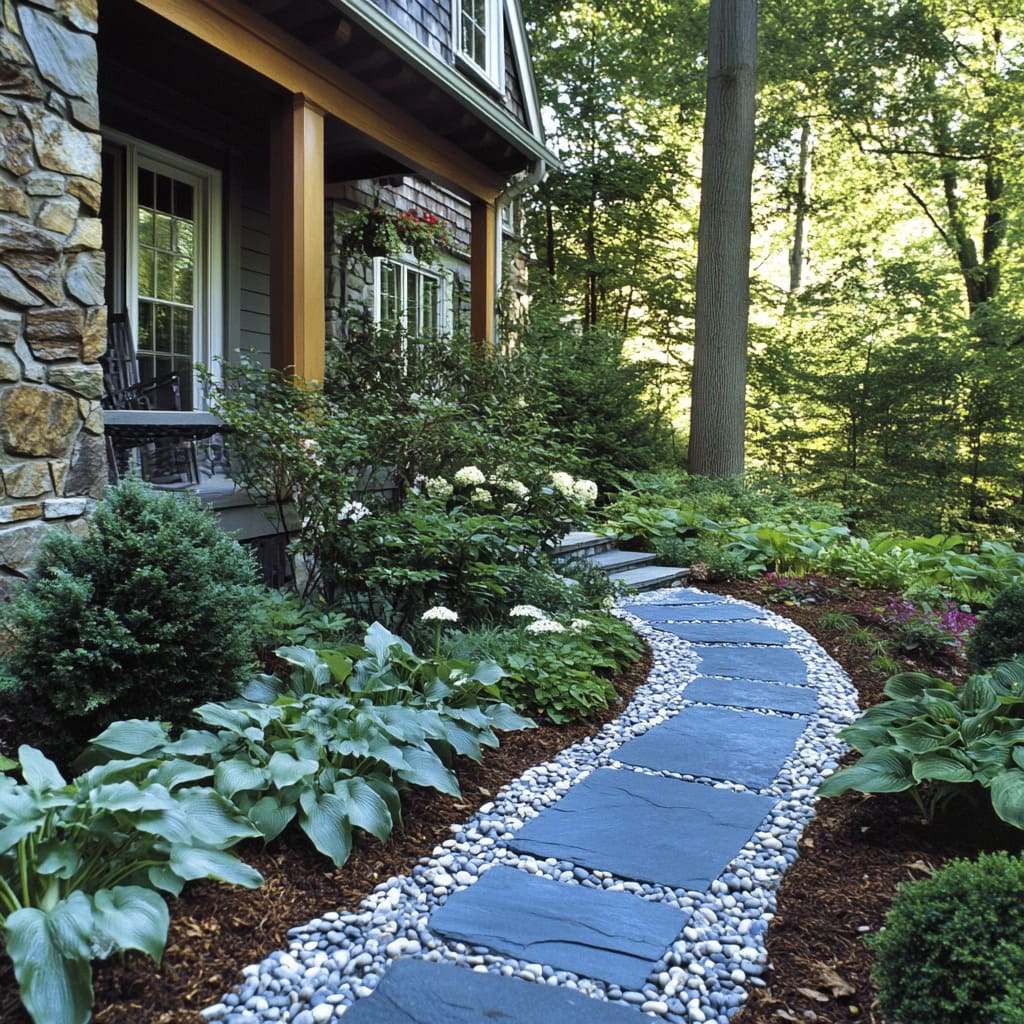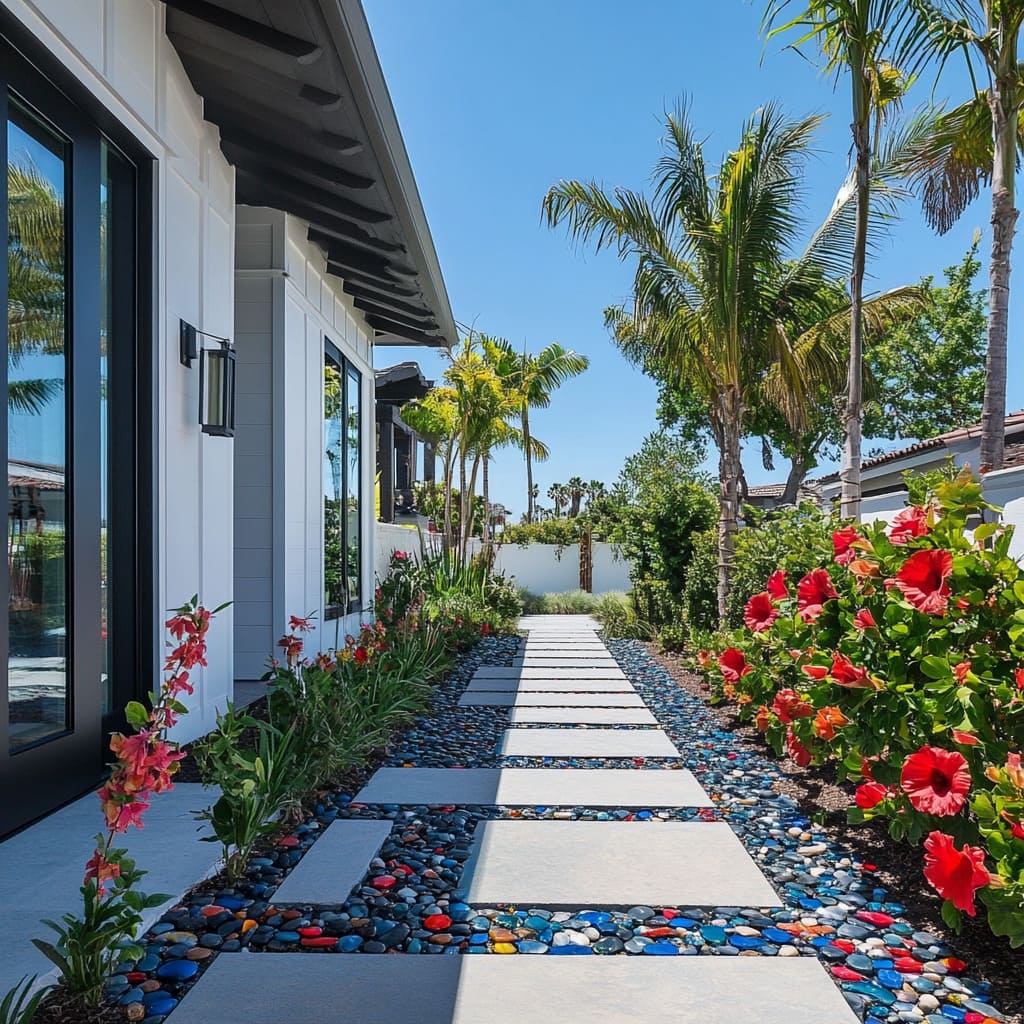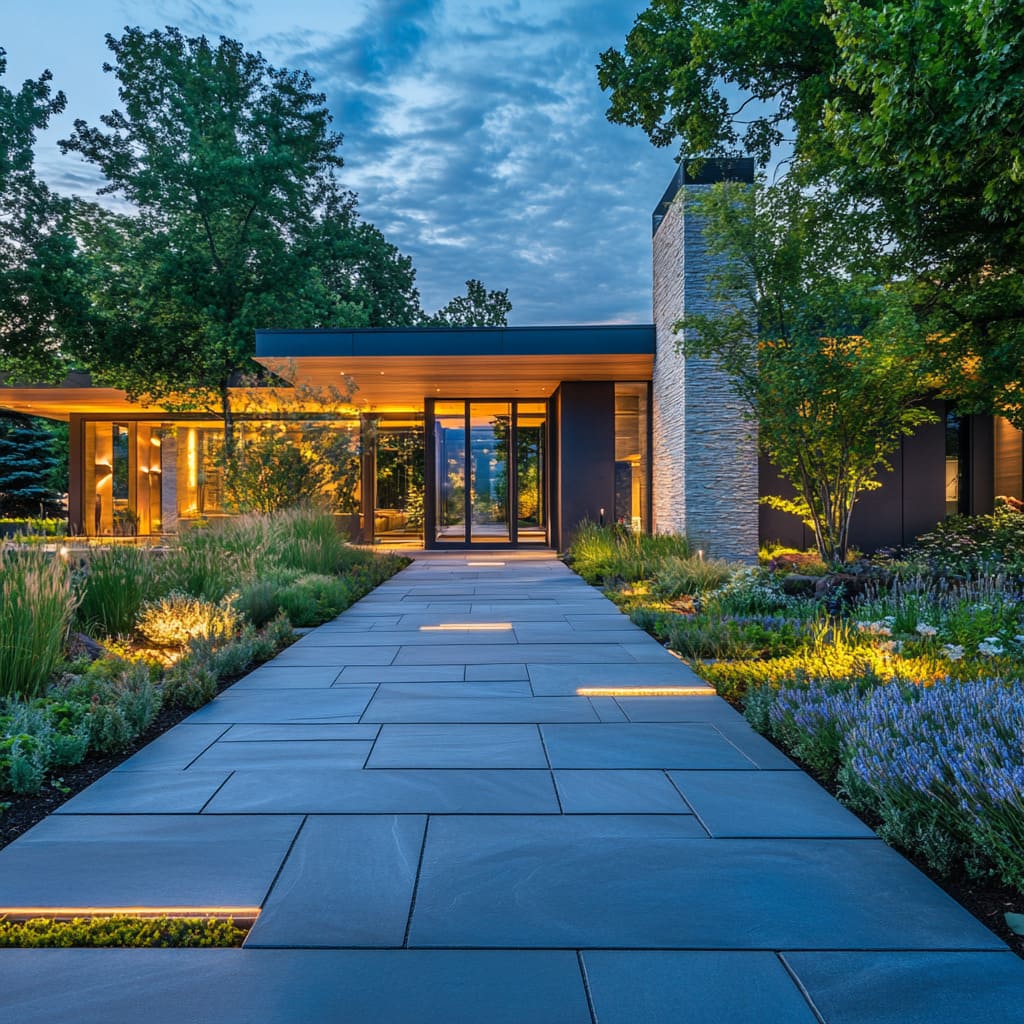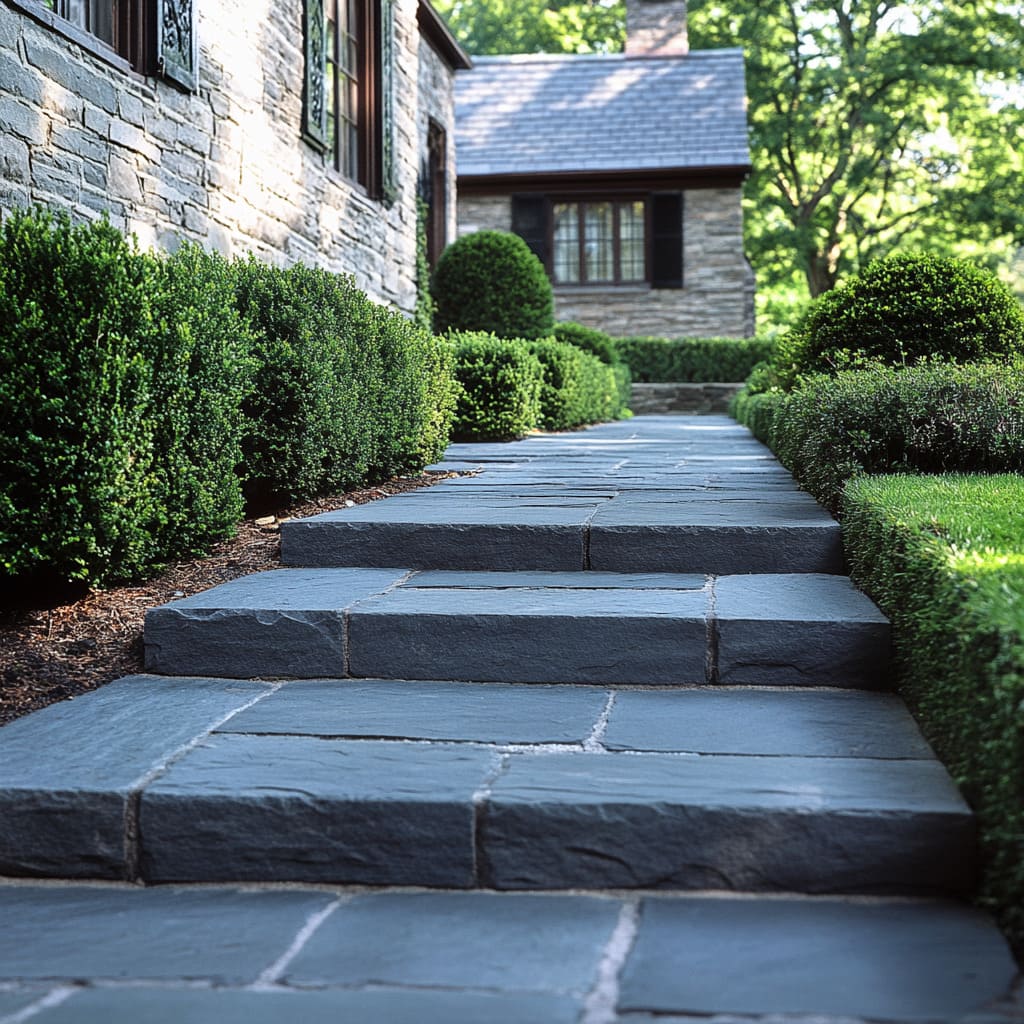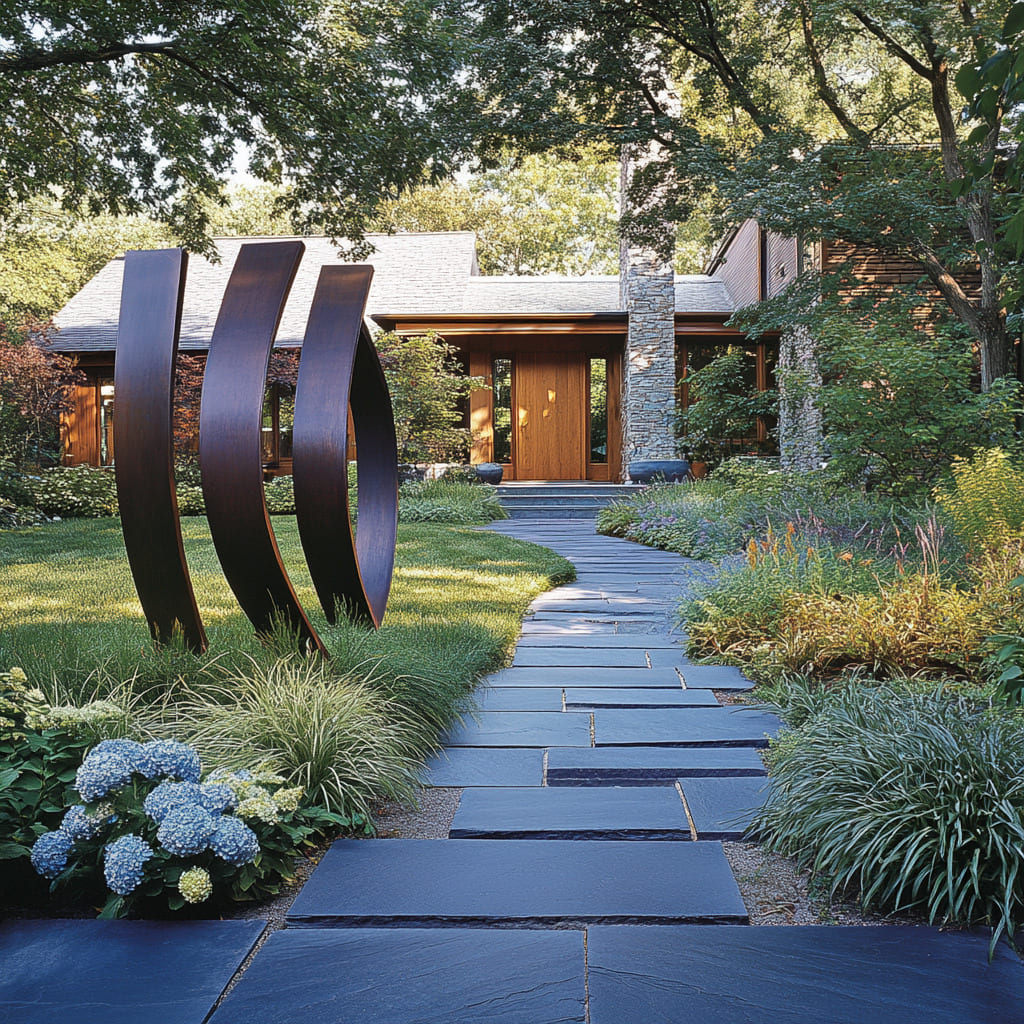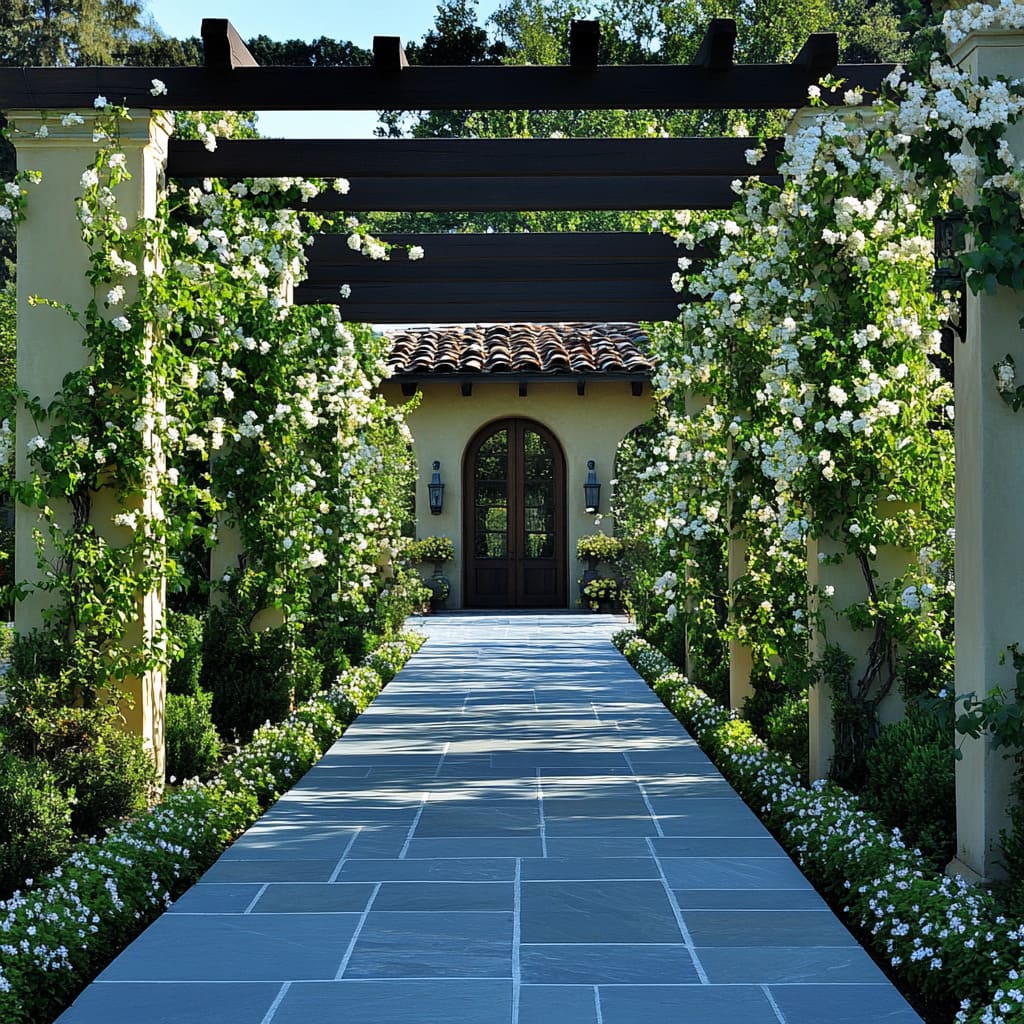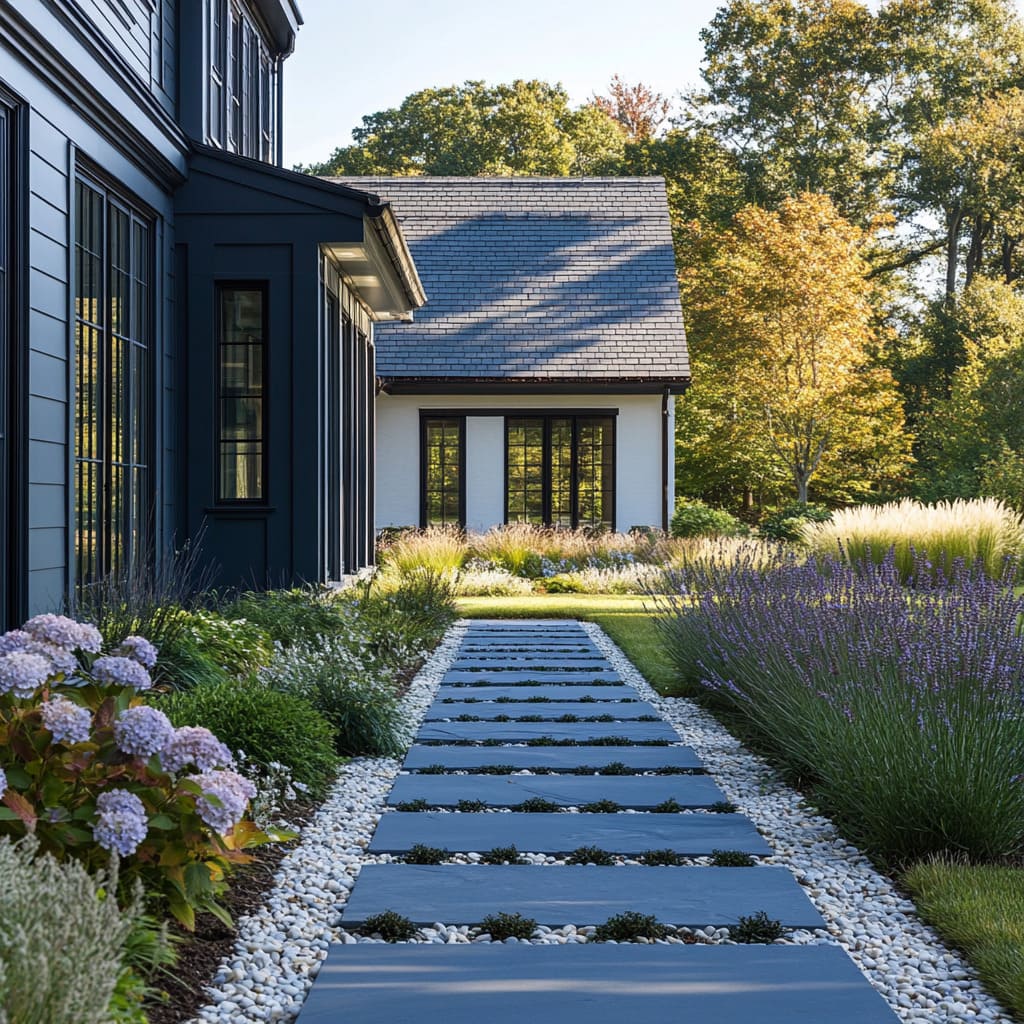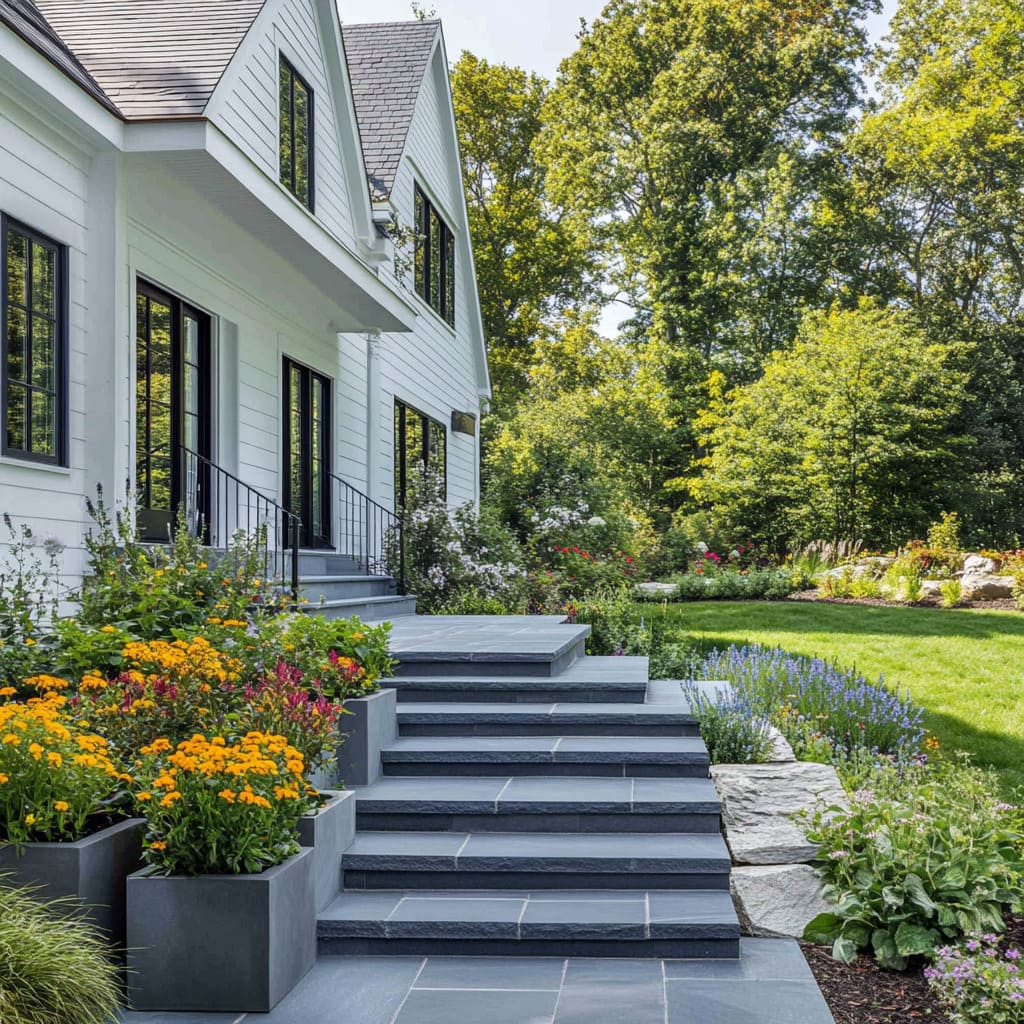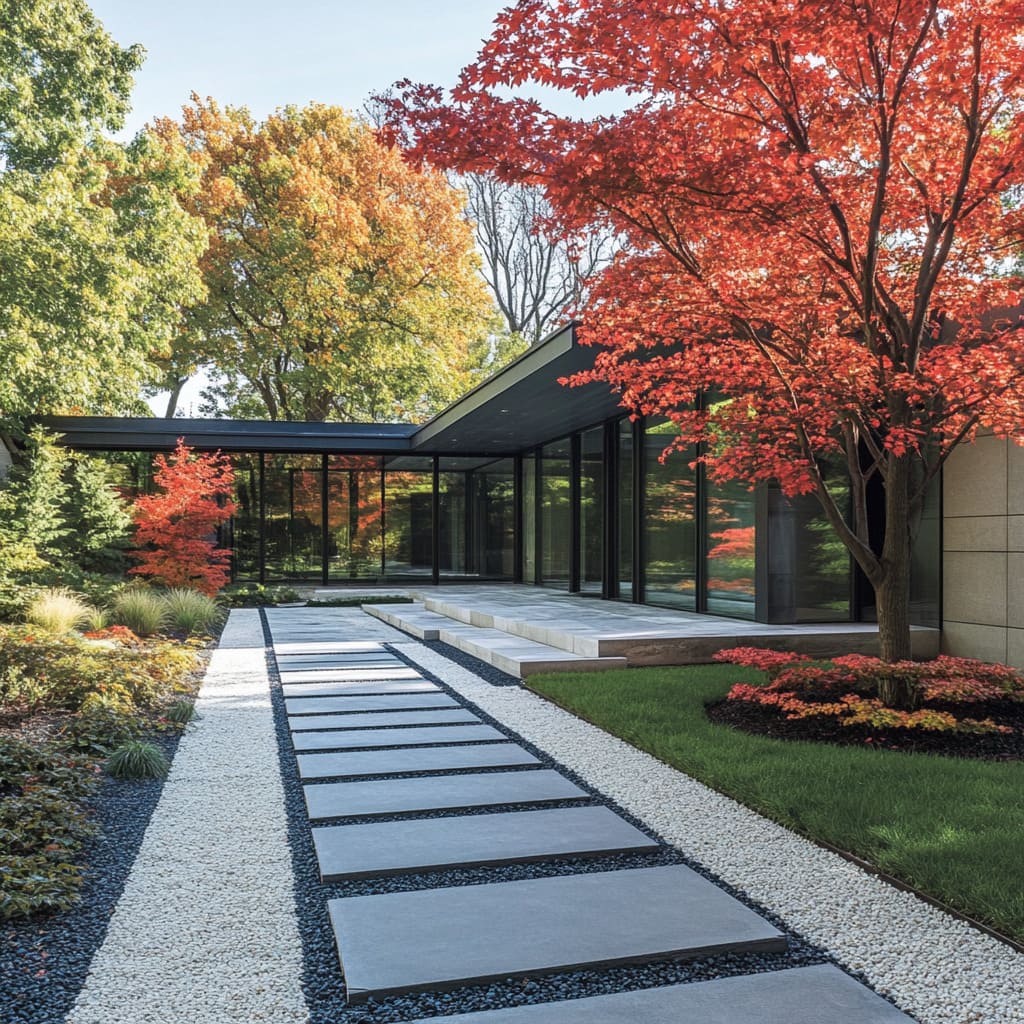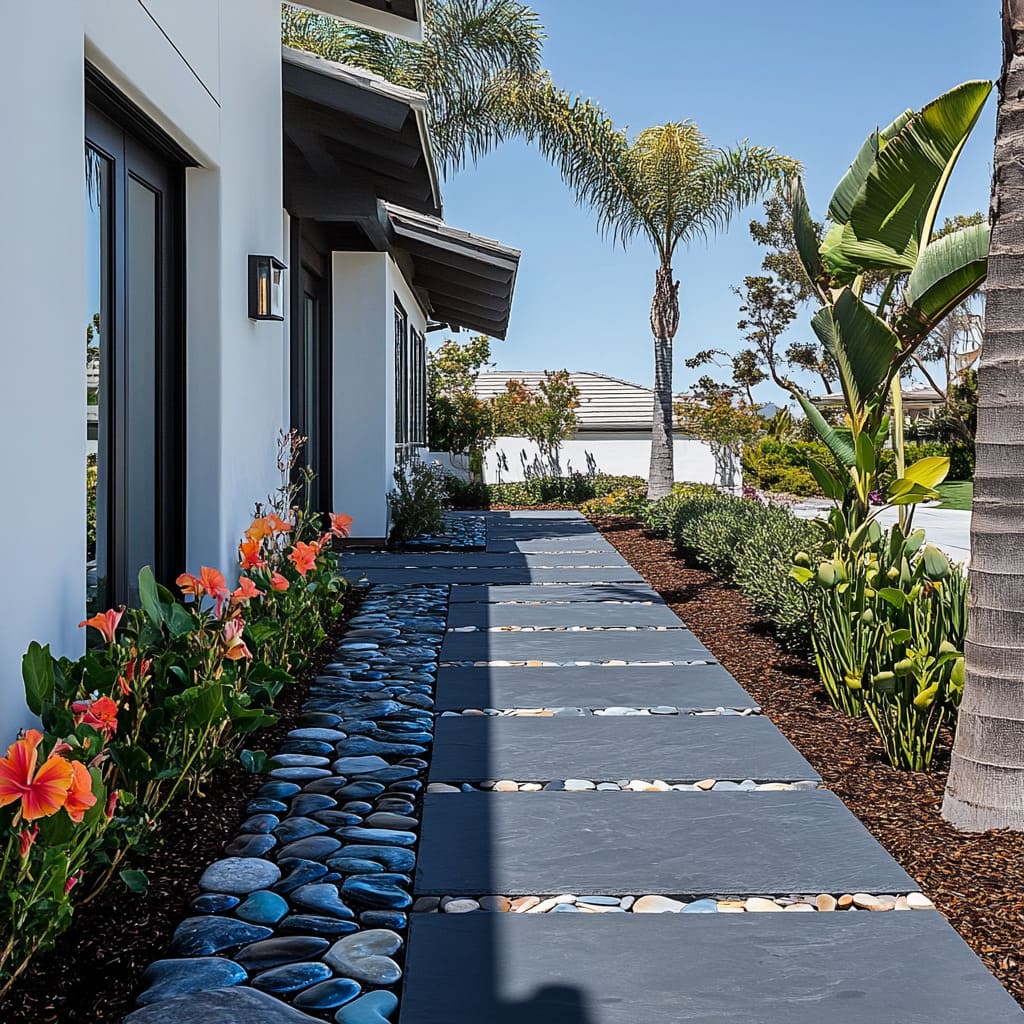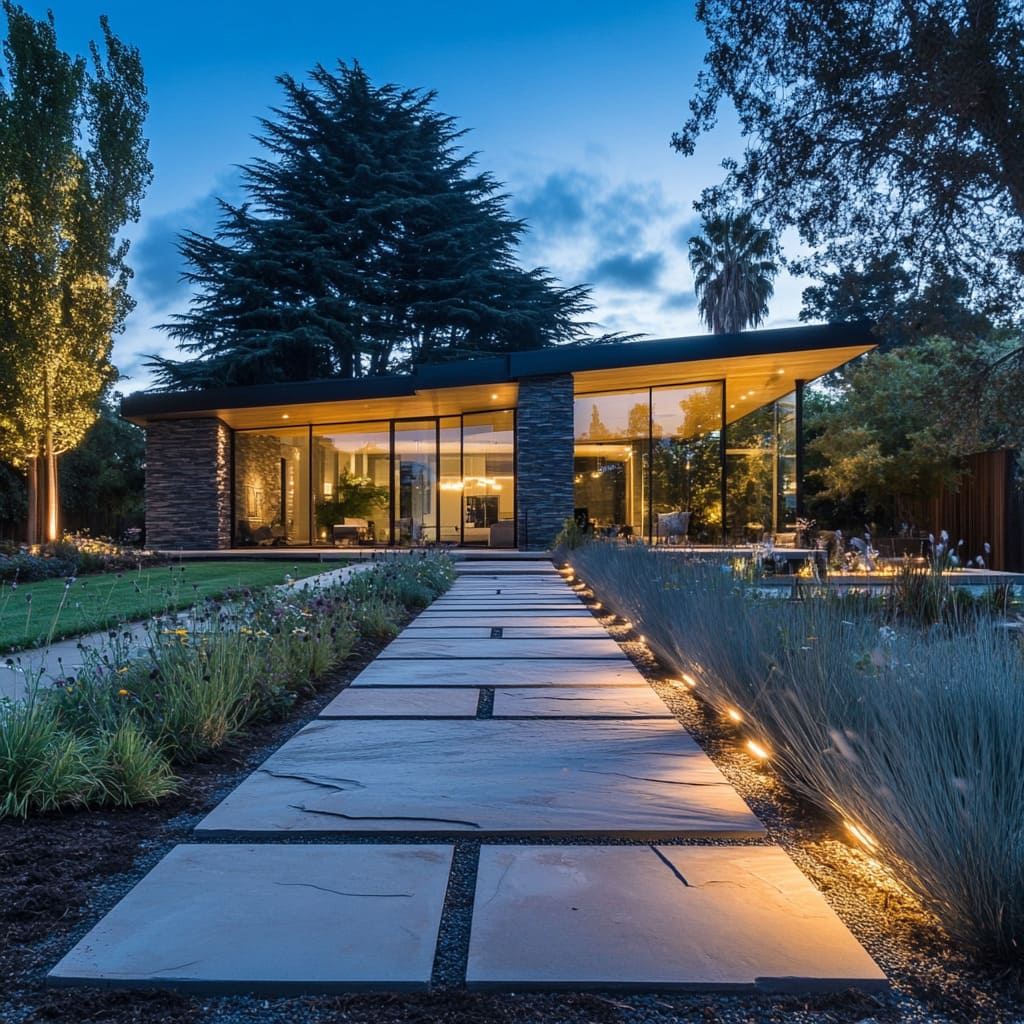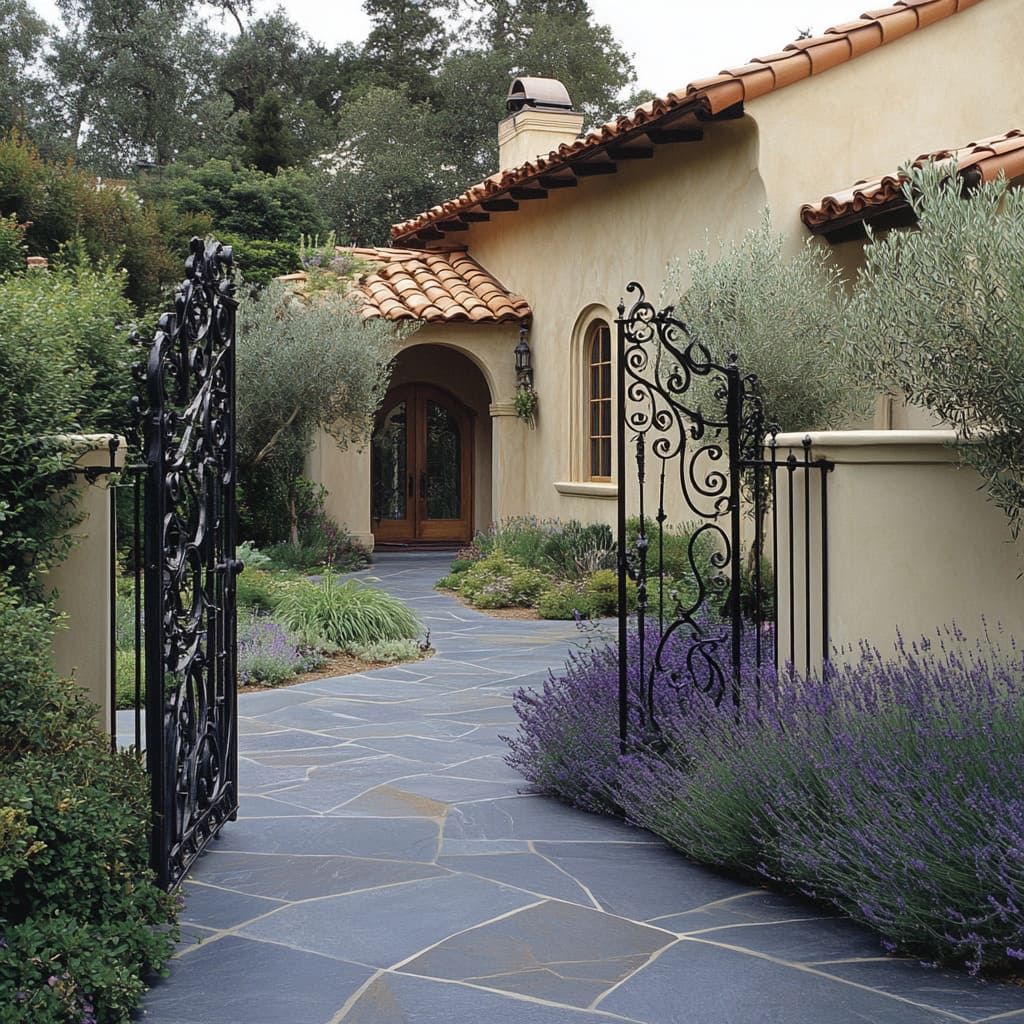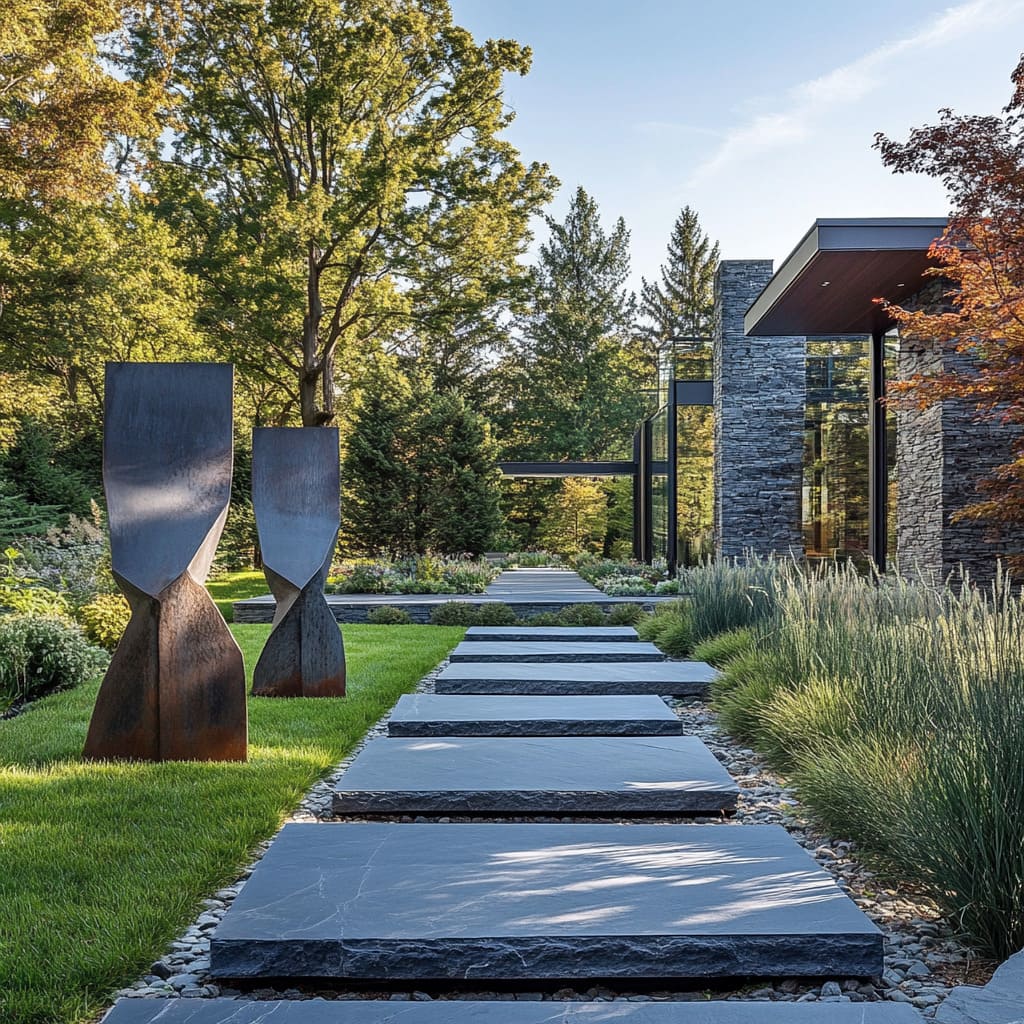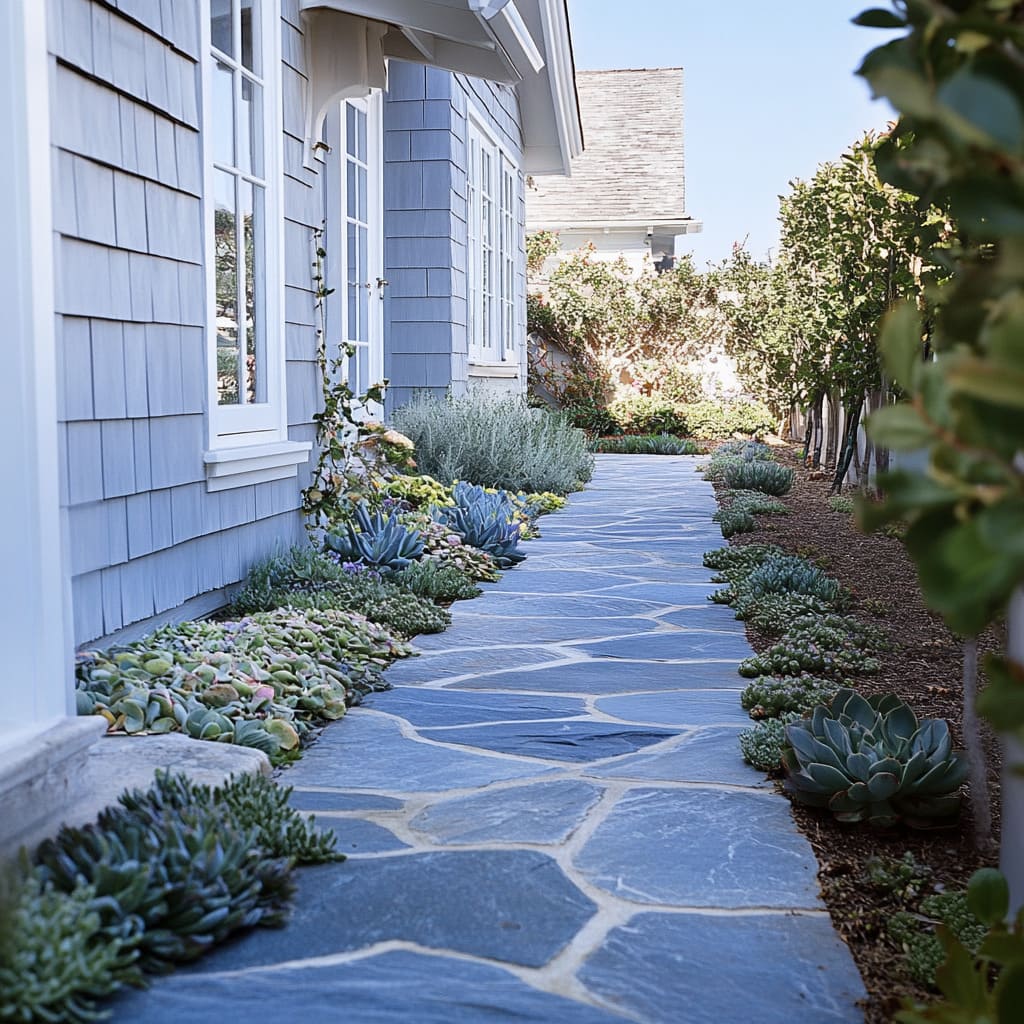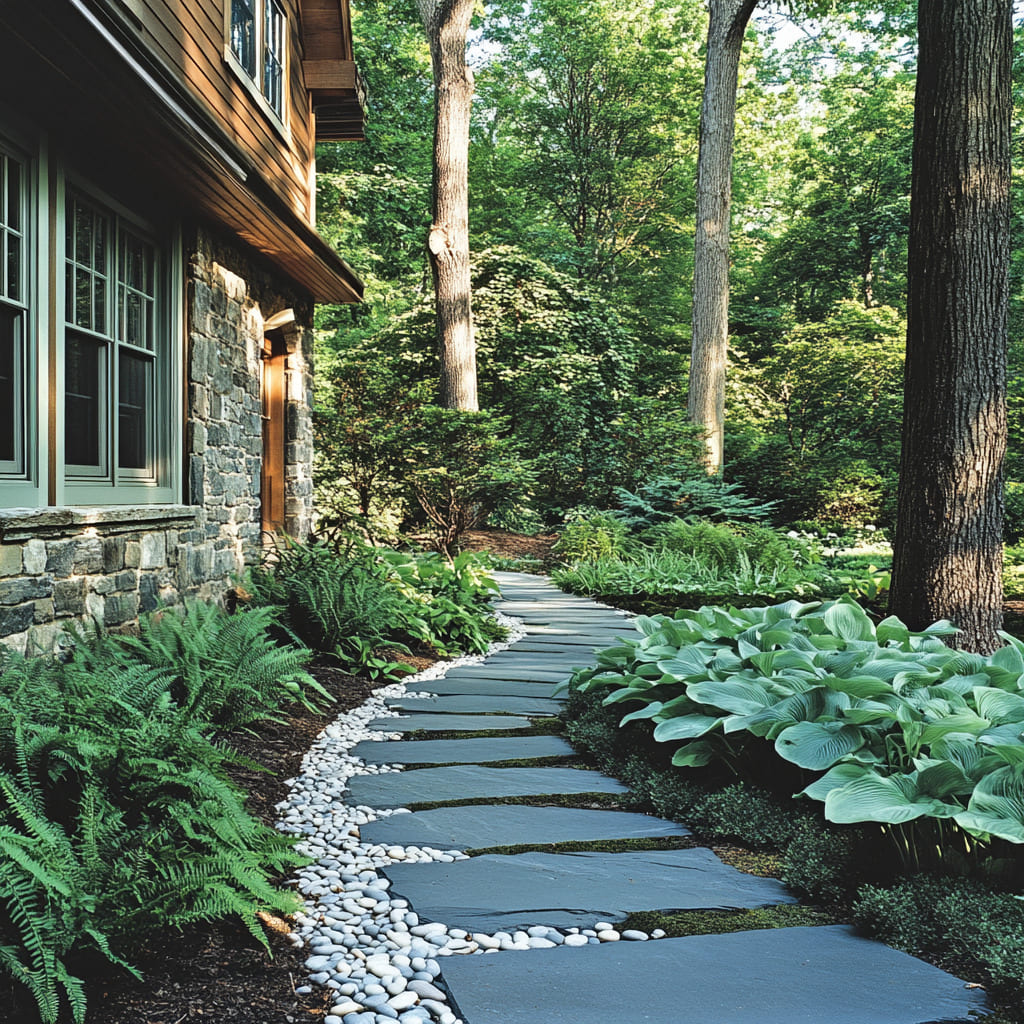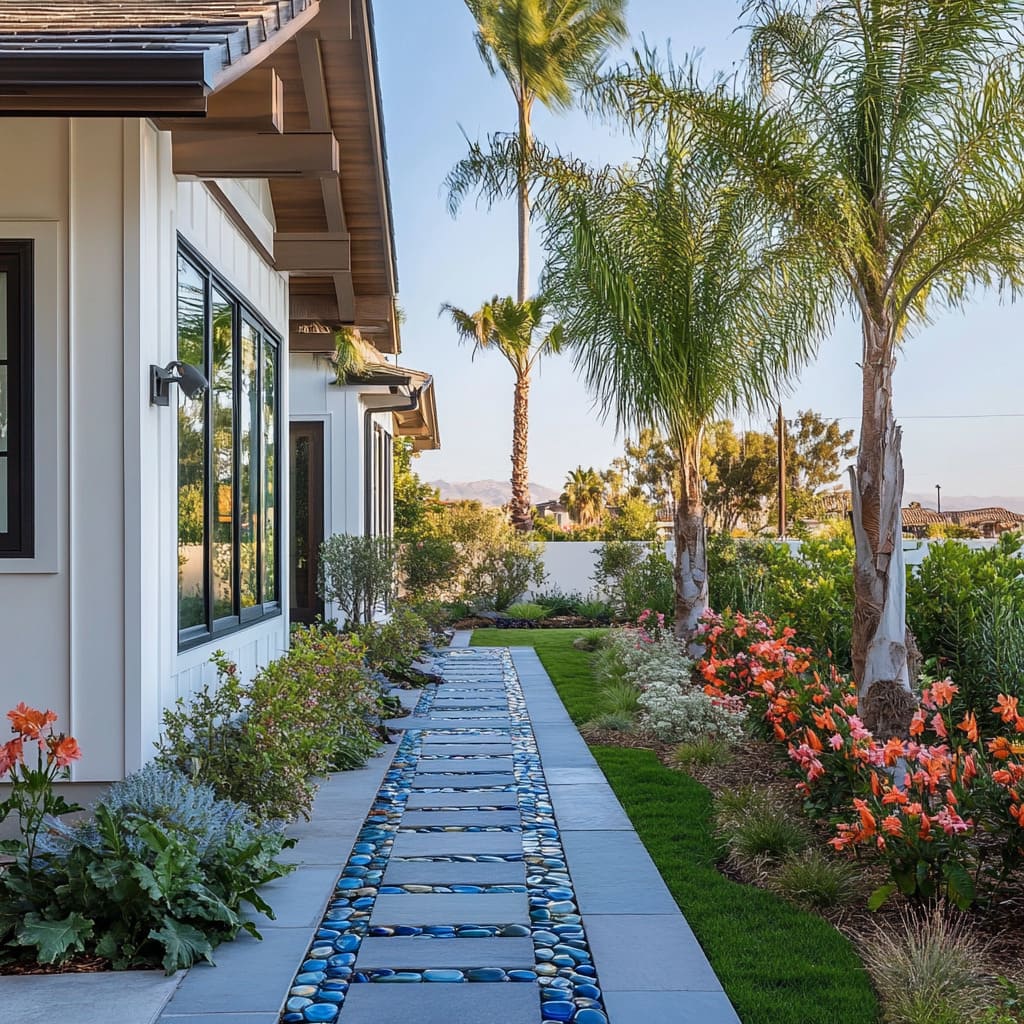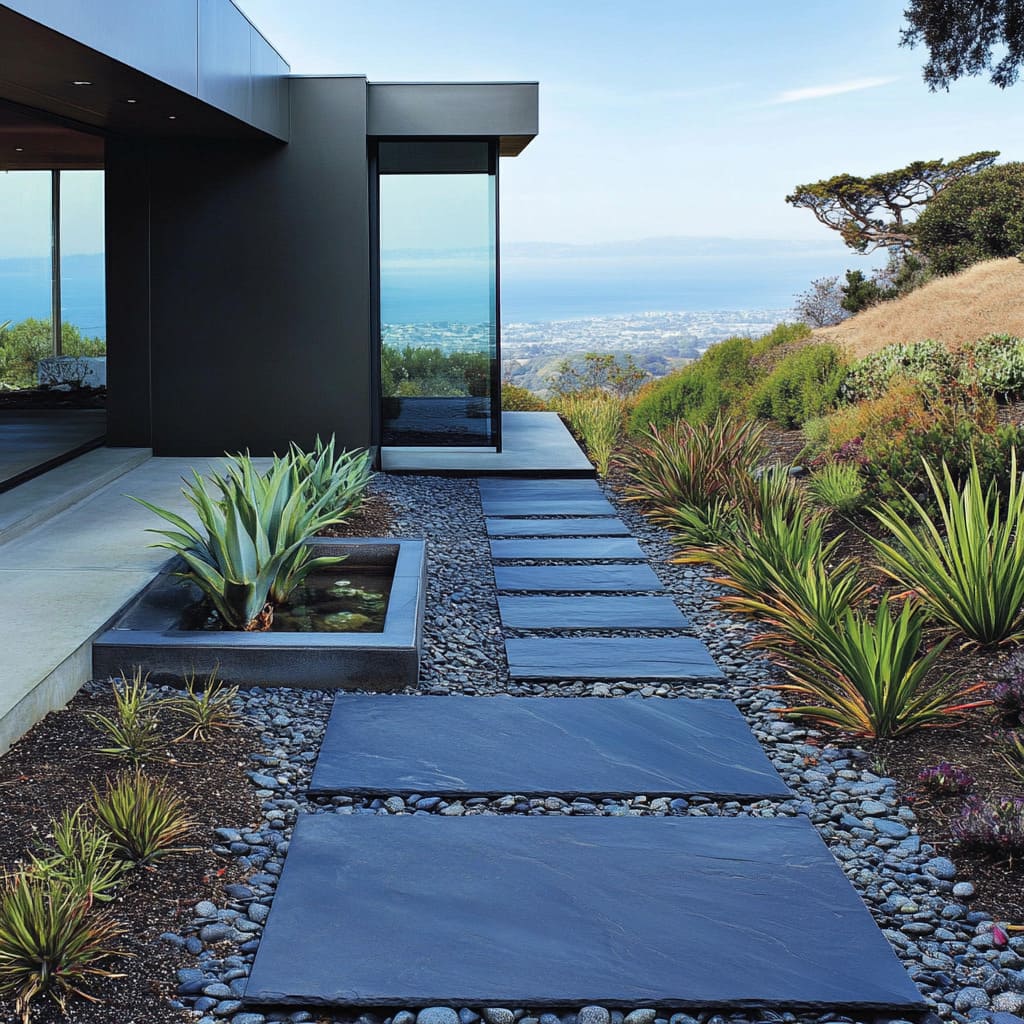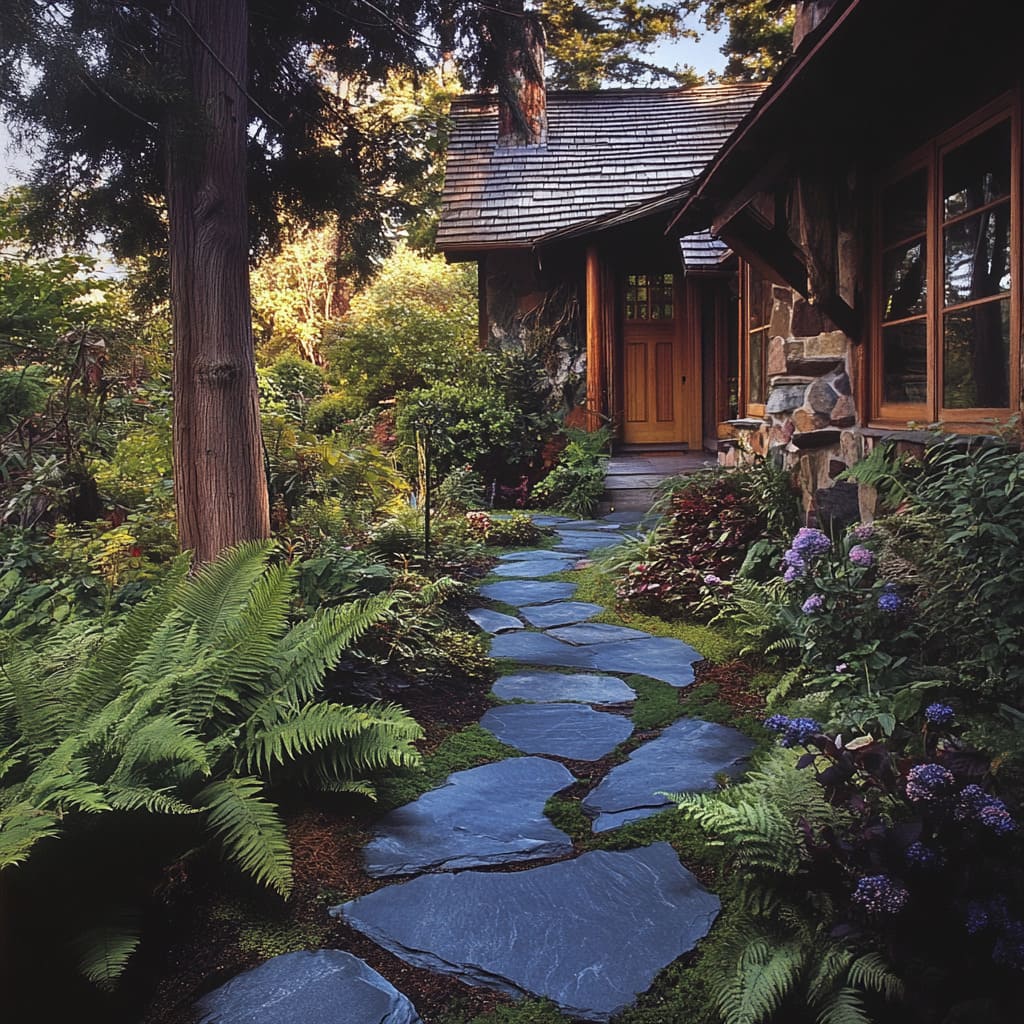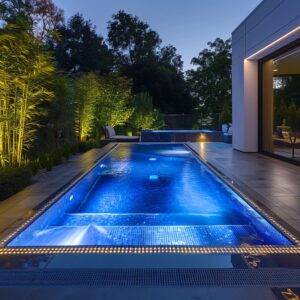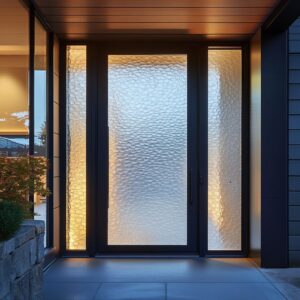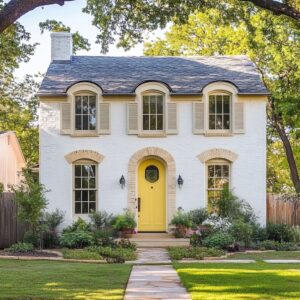Bluestone pathways bring a fresh perspective to garden design by blending natural beauty with sleek, modern appeal. Their versatility and durability make them a perfect choice for homeowners who want to transform their outdoor spaces into more than just functional routes—they become integral parts of the landscape’s overall style.
Whether leading up to a modern home or winding through a lush garden, Bluestone has a way of enhancing its surroundings with effortless grace. When laid thoughtfully, Bluestone can offer a striking contrast to greenery or mirror the subtle hues of a natural setting, making it adaptable to different design preferences.
It’s as comfortable in a minimal, geometric layout as it is in a more organic, meandering form, making it a favorite for those looking to create a stylish outdoor area.
This article will explore how choosing bluestone for walkway designs can offer both aesthetic and practical benefits. We’ll dive into how Bluestone stands up to the elements, its wide range of colors and textures, and why it has such timeless appeal.
Along the way, we’ll also share some inspiring bluestone walkway ideas to help you create a cohesive, modern garden environment.
Why Choose Bluestone for Your Garden Pathway?
Durability and Aesthetics
Bluestone’s natural resilience makes it an ideal material for outdoor pathways, as it can withstand the changing seasons with minimal maintenance. Whether exposed to scorching summers or frost-filled winters, it remains strong and maintains its structural integrity.
This weather resistance ensures that a bluestone path will look as good in the future as it does on day one, making it an investment that pays off for years. The stone’s strength doesn’t come at the cost of beauty, though.
Bluestone is known for its subtle elegance, effortlessly combining the rugged durability of natural stone with a refined, polished look. Its sturdy nature makes it perfect for high-traffic areas without sacrificing visual appeal.
Variety of Tones and Textures
One of Bluestone’s greatest strengths is its versatility in terms of colors and finishes. Available in shades ranging from deep blues and greys to earthier rusts and browns, Bluestone can complement virtually any garden or home design.
Its ability to capture different tones depending on the light and surrounding elements makes it dynamic—constantly enhancing the environment it’s set within.
There’s also variety in texture. Whether you prefer a natural cleft surface that highlights the stone’s inherent roughness or a smooth, honed finish for a more polished look, Bluestone offers plenty of options.
A thermal finish gives a slightly rough surface with a more uniform appearance, making it ideal for modern designs where sleek lines and consistency are key. This flexibility allows you to customize your bluestone walkway ideas to fit any aesthetic, whether contemporary or rustic.
Timeless Appeal
Bluestone’s timelessness is one of its most attractive qualities. It has been a popular choice for garden paths and walkways for generations, yet it never feels out of place, no matter how trends change.
Whether used in traditional settings or as part of sleek, modern designs, Bluestone provides a sense of grounded elegance that endures over time. Its neutral tones allow it to blend seamlessly into natural landscapes or stand out as a feature in minimalist gardens.
This makes Bluestone a favorite material for those who want something both durable and aesthetically versatile. Incorporating Bluestone for a walkway project is not just about following trends—it’s about choosing a material that transcends them, offering timeless beauty and resilience in any setting.
Designing Your Bluestone Pathway: Layout and Patterns
Organic and Meandering Pathways
For those seeking a more natural, informal feel, an irregular bluestone walkway might be the ideal choice. This design relies on Bluestone slabs of varying shapes and sizes, laid out in a seemingly spontaneous pattern.
The irregularity of the stones not only creates visual interest but also gives the pathway a rustic, woodland charm that feels at home in gardens designed to evoke nature. These pathways often meander through the landscape, gently curving and winding between plantings, which invites visitors to explore and discover.
For example, consider a forest-inspired garden where an irregular Bluestone path is laid out with gaps between the stones. The spaces between the slabs are filled with soft moss, creating a sense of age and belonging, as if the pathway had always been part of the landscape.
These moss-filled cracks provide a natural transition between the stone and the surrounding greenery, allowing the pathway to blend into the environment without feeling imposed. Organic curves, like the ones in a forest setting, help soften the edges, enhancing the feeling of a garden trail rather than a structured walkway.
Linear and Geometric Patterns
If your style leans toward modern, clean lines, then Bluestone can also be arranged in more structured, linear patterns. Rectangular slabs laid in staggered or grid formations create a contemporary look that complements minimalist or modern homes.
These bluestone walkway ideas are often designed with precision, using consistent spacing and alignment to emphasize order and structure. A perfect example of this is a bluestone walkway leading up to a sleek, modern home.
The pathway features straight lines, with large rectangular slabs laid out in a staggered formation. This gives a sense of rhythm and structure while providing a clear, direct route to the entrance.
The uniformity of the slabs emphasizes the modern aesthetic, while the natural tones of the stone provide a touch of warmth and connection to the outdoors. This type of pathway is ideal for homeowners who prefer a more structured, organized look that contrasts with the natural elements around it.
Incorporating Curves for Flow
Not every Bluestone path needs to be rigidly structured or completely free-form; finding a middle ground by incorporating gentle curves is often the perfect solution. These soft curves allow the pathway to maintain a modern look while feeling less formal.
The subtle bends in the path create a sense of flow, helping the design integrate seamlessly into a garden landscape. Take, for instance, a Bluestone path that leads from a driveway to a front door.
The slabs gently curve, guiding visitors naturally toward the entrance while creating a sense of movement and discovery. These curves also soften the straight lines of a home’s architecture, making the transition from the outdoors to indoors feel more welcoming.
By opting for soft curves instead of sharp angles, a Bluestone pathway can add a touch of elegance without losing its modern appeal.
Enhancing Your Bluestone Pathway with Natural Inlays and Accents
River Rocks and Glass Pebbles
Incorporating natural elements like river rocks or glass pebbles between Bluestone slabs is a creative way to enhance the overall look of your bluestone path. These inlays add texture and contrast to the smooth surface of the stone, bringing visual interest to the pathway.
River rocks, with their rounded, organic shapes, create a softer look when placed between the slabs, while glass pebbles can add a modern touch, reflecting light and creating a subtle shimmer.
For example, imagine a modern Bluestone path accented with glass pebbles. The reflective surfaces of the pebbles capture light throughout the day, adding an extra layer of sophistication to the design.
At night, these inlays can take on a new role when paired with subtle lighting, creating a pathway that feels both elegant and functional. The mix of materials also creates a tactile experience for visitors as they walk along, encouraging interaction with the space.
Moss and Groundcovers
For a more natural, aged look, moss or other groundcover plants can be planted between the Bluestone slabs. This design choice helps the pathway blend into the garden, making it feel like a part of the landscape rather than a separate element.
Moss, in particular, works well in shaded gardens where moisture is retained, adding a soft texture that complements the hard surface of the stone. In a woodland-style garden, an irregular bluestone walkway filled with moss between the slabs creates an effect that feels timeless, as though the path has been there for decades.
The moss adds a gentle layer of greenery that contrasts beautifully with the stone, creating a pathway that feels like a natural extension of the garden itself. The use of groundcovers or moss allows the pathway to integrate seamlessly with its surroundings, enhancing the overall aesthetic while offering a low-maintenance solution for homeowners.
Complementing Your Bluestone Pathway with Landscaping
Lush, Textured Plantings
When designing a modern bluestone walkway, incorporating lush, textured plantings can make all the difference between a stark path and an inviting, vibrant space. Plants such as ferns, ornamental grasses, and flowering shrubs like hydrangeas help soften the hard edges of the Bluestone and bring color and movement into the design.
These plants add dimension and texture, creating layers that enhance the overall experience of walking along the path. Imagine a Bluestone path flanked by ferns, their delicate, feathery fronds creating a green border that contrasts with the cool, smooth surfaces of the stone.
Hydrangeas, with their large, voluminous blooms in shades of blue and purple, provide an eye-catching contrast against the neutral tones of the stone. The effect is both calming and dynamic, offering an interplay of colors and textures that makes the pathway feel integrated into the surrounding landscape.
By framing the Bluestone path with these plants, you not only soften the hardscape but also create a visual journey that encourages exploration.
Using Native or Low-Maintenance Plants
For homeowners who want to keep their garden sustainable and easy to care for, incorporating native or drought-tolerant plants is an excellent strategy. Species such as lavender, blue fescue, and sage are perfect for bordering a Bluestone walkway because they require minimal maintenance while adding layers of color and fragrance.
Consider a Mediterranean-inspired design where lavender lines the Bluestone path. Its silvery foliage and purple flowers offer not only visual contrast but also fill the air with a calming fragrance as you pass by.
Nearby, the spiky blue fescue provides a textural counterpoint, its compact form and steel-blue hue perfectly complementing the muted tones of the stone. These plants thrive in sunny conditions and need little watering, making them ideal companions for a Bluestone path that is as functional as it is beautiful.
Framing with Taller Plants and Shrubs
Taller plants and shrubs can provide structure and privacy along a Bluestone path, adding verticality to the design and creating a sense of enclosure. By framing the pathway with these larger plants, you introduce a sense of scale that enhances the overall aesthetic and makes the walkway feel more intimate and protected.
For example, envision a bluestone walkway design where towering palm trees line one side, their long fronds arching gracefully overhead. These palms create a natural canopy, offering both shade and a dramatic sense of vertical height.
On the opposite side, ornamental grasses sway gently in the breeze, their movement bringing life to the scene. This combination of tall, structural plants and softer grasses ensures that the Bluestone path feels like an integral part of the garden rather than a separate, static element.
Integrating Sculptural Elements Along Your Pathway
Adding Artistic Sculptures
One way to take your Bluestone path from functional to visually captivating is by integrating artistic sculptures or accents along the way. Sculptures can serve as focal points that draw the eye and add an element of drama to the landscape.
Whether contemporary or classic, a well-placed sculpture creates a moment of pause, encouraging interaction with the space. For instance, a striking metal sculpture placed near the Bluestone path can become the anchor that adds depth to the overall design.
The rusted metal contrasts beautifully with the cool grey and blue hues of the stone, creating a blend of materials that feels intentional and well-thought-out. By positioning the sculpture just off the path, you invite visitors to engage with the art while also offering a visual break from the surrounding garden.
This kind of integration can elevate the walkway into a true visual experience.
Using Pathway Lighting for Ambiance
Lighting plays a critical role in extending the use and enjoyment of your Bluestone path well into the evening hours. Strategically placed lights not only ensure safety but also enhance the mood of the garden, casting soft glows and shadows that transform the space.
Integrating LED lights into or along the edges of the Bluestone path highlights the natural texture of the stone, adding depth and warmth. For example, low-level lights embedded along the edges of the Bluestone slabs softly illuminate the pathway, guiding the way without overpowering the scene.
The subtle lighting creates a welcoming ambiance, enhancing the calm, natural beauty of the Bluestone. Whether it’s casting long shadows from nearby trees or spotlighting the textures, lighting can make your pathway feel as much a part of the evening garden as it does during the day.
Bluestone Pathways and Home Exterior: Creating a Cohesive Look
Matching Pathway Design with House Architecture
When designing a Bluestone pathway, ensuring harmony between the path and the home’s architecture is crucial. The right combination of materials and colors can make the exterior look more unified and thoughtful, rather than disjointed.
A Bluestone pathway works particularly well when the colors of the stone complement or reflect the tones used in the house’s exterior materials. The result is a cohesive design that ties the outdoor elements to the building, making the transition from garden to home feel seamless.
For example, imagine a rustic home clad in natural stone and wood. An irregular Bluestone path leading up to the entrance blends effortlessly with the natural textures of the house.
The uneven Bluestone slabs echo the ruggedness of the surrounding environment, while the earth tones in the stone mirror the wooden beams and stone chimney of the house. This type of pairing ensures that the pathway doesn’t feel out of place but rather like an extension of the home itself.
The materials and colors work together to create a unified aesthetic, making the entire space feel intentional and well thought out.
Enhancing Modern Homes with Sleek, Geometric Paths
For contemporary homes, where glass, metal, and clean lines dominate the design, Bluestone can offer a striking contrast while still maintaining a sense of cohesion. Modern homes often benefit from geometric pathways that emphasize the sleek, minimalist nature of the architecture.
Straight, staggered Bluestone slabs, for example, can reflect the structured, organized look of the home while still adding a natural element to soften the overall feel.
Consider a modern home with floor-to-ceiling windows, sharp angles, and metal accents. A geometric Bluestone path, laid out in perfectly aligned rectangles, leads from the driveway to the entrance.
The straight lines of the pathway mirror the house’s clean design, while the natural variations in the stone’s surface prevent the space from feeling too sterile. This type of Bluestone walkway design is particularly effective when the home’s architecture leans heavily on industrial materials like glass and steel.
The contrast between the rugged Bluestone and the sleek surfaces of the house creates a balanced and visually compelling aesthetic.
Integrating Natural Materials Like Wood and Stone
One of the best ways to create a cohesive connection between the Bluestone pathway and the home is to integrate natural materials, such as wood or stone, into both the exterior and the landscape. This approach ensures a fluid transition between the built and natural environments, making the home feel like it belongs in the landscape rather than sitting on top of it.
The combination of Bluestone, wood, and natural stone in both the pathway and the house can create a warm, welcoming atmosphere that feels organic and timeless.
For example, envision a home with a large wooden door and a stone chimney. The Bluestone path leading to the entrance is carefully aligned with the chimney’s natural stone, creating a visual link between the house and the walkway.
Meanwhile, the wooden door echoes the organic tones of the Bluestone, tying the elements together in a subtle yet impactful way. A curved Bluestone walkway can further enhance this effect, allowing the path to gently flow into the landscape, reinforcing the idea that the home is part of its natural surroundings.
By using natural materials in both the home and the Bluestone path, you can create a warm, cohesive design that feels intentional and well-integrated. Whether you’re working with wood, stone, or a combination of both, these materials will add richness and texture to the overall look, ensuring the space feels unified and inviting.
The Bluestone pathway becomes an integral part of the home’s design, bridging the gap between the built environment and the natural world.
Creating a Sensory Experience Along Your Pathway
Incorporating Fragrance and Texture
When designing a Bluestone pathway, it’s important to think beyond just the visual elements and incorporate plants that enhance the sensory experience. Fragrance and texture can play a pivotal role in creating a truly immersive garden.
By carefully selecting plants that engage the senses, you add another layer of depth to your outdoor space, making a simple walk down the path a rich experience.
For example, lavender is an excellent choice for planting alongside a Bluestone sidewalk. Its soft purple flowers offer a calming fragrance that gently fills the air as you stroll.
The tactile quality of its silvery leaves adds a soothing element as they brush against you. Sage, with its more robust, earthy scent, complements lavender perfectly and brings a grounded, herbal aroma that enhances the overall experience.
Ferns are another ideal option to add texture and visual softness. Their feathery, delicate fronds provide a beautiful contrast to the solid, flat surfaces of Bluestone slabs.
As you walk along the Bluestone paver walkway, the mixture of fragrant and textured plants creates a multisensory journey, offering not just a visual feast but an aromatic and tactile one as well. This approach turns the pathway into more than just a functional element—it’s an experience that touches on all the senses.
Using Light and Shadow to Enhance the Path
The interplay of light and shadow along a Bluestone path can significantly impact its overall atmosphere. Whether it’s natural light filtering through trees or strategically placed lighting fixtures, using light to enhance the space adds a level of intrigue and beauty that changes with the time of day.
Imagine walking down a Bluestone path in the morning, with soft, dappled sunlight streaming through overhead trees. The sunlight dances on the Bluestone patios and walkways, highlighting the subtle color variations in the stone and casting gentle shadows across the path.
This effect creates a peaceful, ever-changing atmosphere as you move along the path, making each moment feel different depending on the time of day.
At night, the use of carefully placed lighting—either along the edges of the path or embedded within the stones themselves—can transform the space. Low-level LED lights or solar-powered fixtures can softly illuminate the Bluestone paver walkway, creating a warm and inviting glow.
The gentle contrast between lit and unlit areas adds depth to the path, guiding your steps while also setting a mood of calm and tranquility. This thoughtful use of light and shadow makes the pathway come alive, shifting its mood as day turns to night.
Conclusion
Bluestone pathways offer more than just a practical solution for navigating your garden; they transform outdoor spaces into stunning environments that seamlessly blend natural beauty with modern design. The variety of layouts, textures, and plantings available allow you to create a path that reflects your personal style while enhancing the surrounding landscape.
Whether you opt for a natural Bluestone sidewalk with fragrant plants and soft textures or a sleek, modern pathway illuminated with soft lighting, there are endless ways to make your garden unique. By experimenting with different inlays, plants, and lighting, you can create a Bluestone pathway that’s not only functional but a personal expression of style.
In the end, a well-designed Bluestone path is more than just a route through your garden—it offers a sensory journey that touches on the beauty of nature while complementing the architecture of your home. As you walk along the pathway, you’ll find yourself immersed in the experience, making every step a true pleasure.

